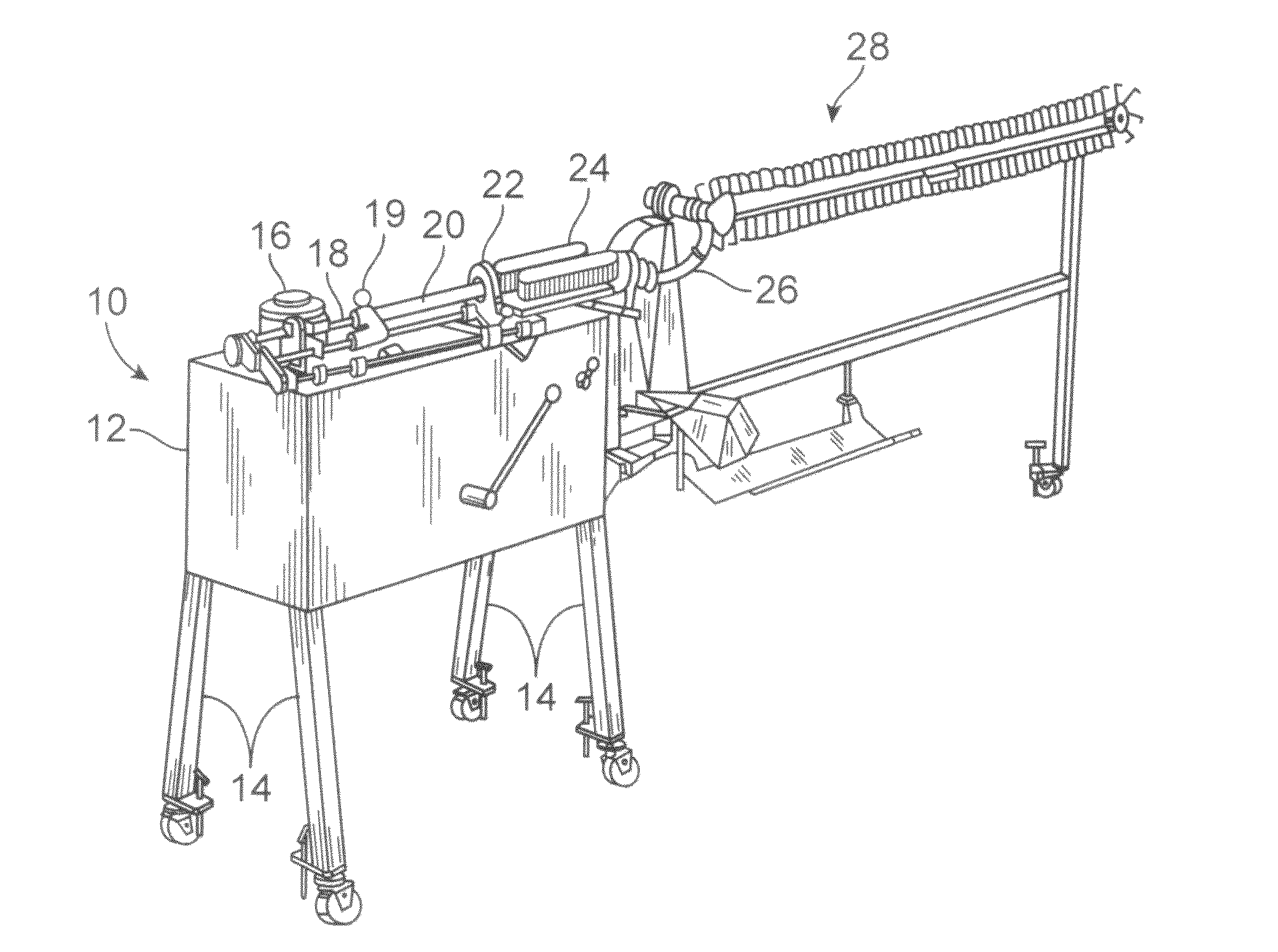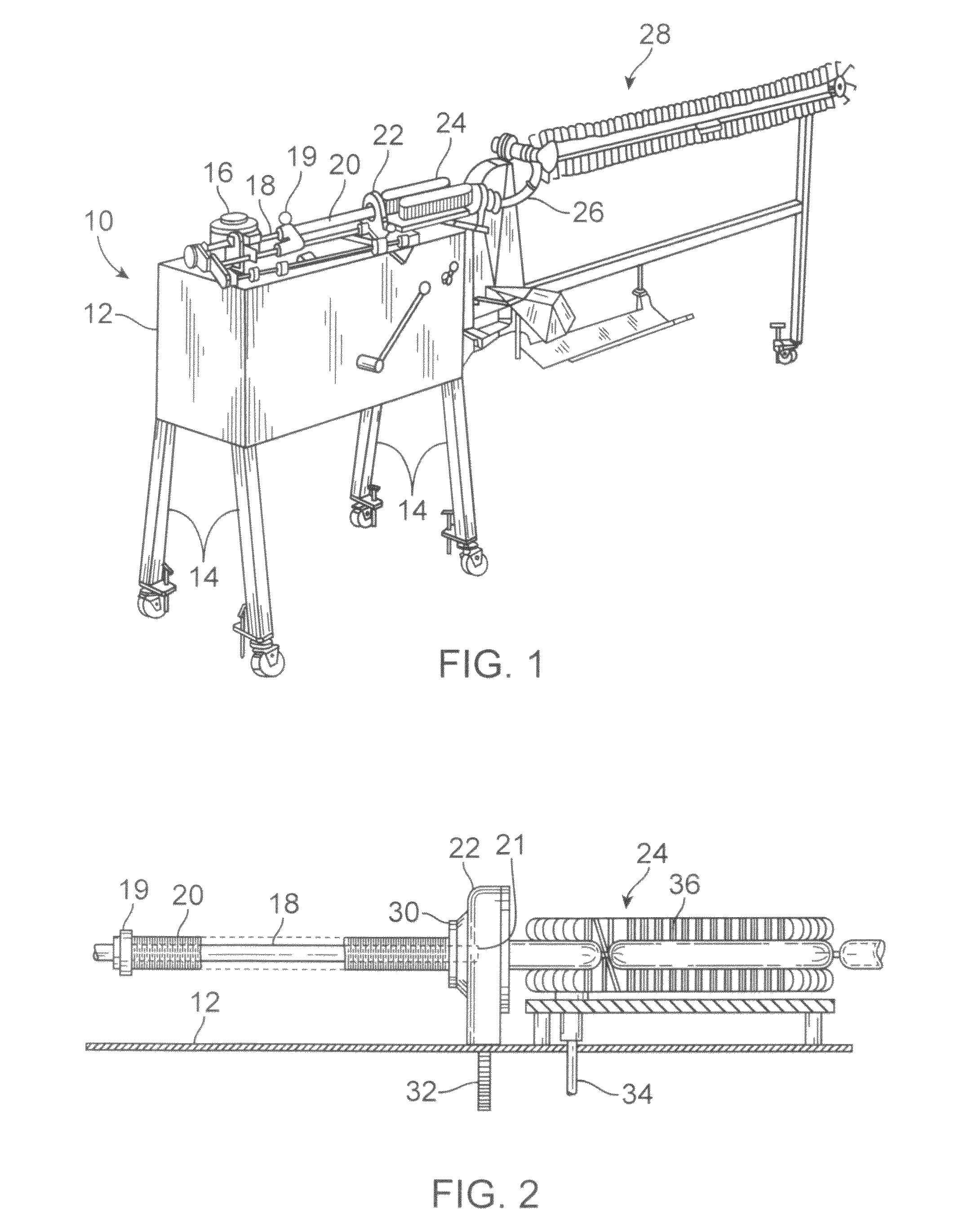Casing chuck
- Summary
- Abstract
- Description
- Claims
- Application Information
AI Technical Summary
Benefits of technology
Problems solved by technology
Method used
Image
Examples
example 1
[0051]A series of tests was conducted to compare the longitudinal forces required to pull cellulose and plastic casing through four different chucks (Std. 22, H22-16, H22-18, and H22-19) on a food encasing machine of the FIGS. 1-2 type (Model RT-7 manufactured by Townsend Engineering Company). In this test, nonreinforced shirred cellulosic casing size 25 (dry flat width about 1.32 inches) manufactured by Viskase Companies, Inc. of Darien, Ill., USA, or nylon casing size 22 (dry flat width about 1.36 inches), also manufactured by Viskase Companies, Inc. of Darien, Ill., USA, was used. These casings were manually pulled through the chucks. The drag force or “holdback” force was measured in pounds, and the data are summarized in Table A.
[0052]The chuck labeled as “Std. 22” was a standard plastic molded chuck in commercial use and sold by Townsend Engineering Company for stuffing nonreinforced casing. This commercial chuck is similar to the chuck shown in U.S. Pat. No. RE37,883E, issued...
PUM
 Login to View More
Login to View More Abstract
Description
Claims
Application Information
 Login to View More
Login to View More - R&D
- Intellectual Property
- Life Sciences
- Materials
- Tech Scout
- Unparalleled Data Quality
- Higher Quality Content
- 60% Fewer Hallucinations
Browse by: Latest US Patents, China's latest patents, Technical Efficacy Thesaurus, Application Domain, Technology Topic, Popular Technical Reports.
© 2025 PatSnap. All rights reserved.Legal|Privacy policy|Modern Slavery Act Transparency Statement|Sitemap|About US| Contact US: help@patsnap.com



